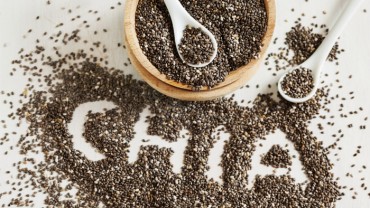How Many Calories are in a Pound of Body Fat?
The number of calories in one pound of body fat has been a hot topic over the past couple of years.
An ongoing debate is taking place in the scientific and health fields – are 3,500 calories actually equal to one pound of body fat, or is that number false and unreliable?
This article explores this debate by looking at different studies and evidence to uncover how many calories are actually in a single pound of body fat.
Additionally, you will learn about the 500-calorie deficit myth and learn new ways to make weight loss more reliable and realistic.
What is Body Fat?
Defining body fact is a bit more complicated than you might expect.
Body fat is not only comprised of pure fat.
Rather, body fat has several different components that make up its full mass.
Human body fat is 54 to 85 percent lipids; lipids are stored triglycerides.
Triglycerides are special glycerol molecules attached to 3 fatty acids.
The rest of fat is mostly water and also proteins and enzymes.
Pure fat has high energy content, which averages around 9 calories per gram.
Therefore, in pure fat, the calorie content averages 4,100 calories per pound.
Since the human body does not have pure fat, the calorie content of actual human body fat is lower (1).
Does 1 Pound of Fat Really Contain 3,500 Calories?
In 1958, a scientist by the name of Max Wishnofsky published an article in the American Journal of Clinical Nutrition stating that one pound of weight gain or weight loss is equal to 3,500 calories.
Essentially, this means that if you want to lose one pound of body fat, you must burn off an extra 3,500 calories (2).
Wishnofsky’s research is the most widely accepted rule of thumb for weight loss.
Most major weight loss program, scientific studies, weight loss calculating and tracking apps, and the like use his research as the optimal weight loss formula.
However, recent studies have begun to suggest that his research and calculations are not as definitive as once believed.
For instance, taking these values, from other sources, into consideration:
One pound = 454 grams
Pure fat = 8.7-9.5 calories per gram
Body fat – 87% fat
It can be assumed that one pound of human body fat can have anywhere from 2,843 to 3,752 calories.
This is a much wider range than originally believed, which can make a significant difference in your ability to lose weight at the rate you think you are lead to believe.
The 500-Calorie Deficit: Fact or Fiction?
Wishnofsky had some blunders with his study and conclusions.
Wishnofsky wrongfully assumed that when you are losing weight you only lose fat tissues.
Similarly, he did not take into account how our bodies will actually react to weight loss (4).
According to Kevin Hall, a researcher at the National Institute of Diabetes and Digestive and Kidney Diseases, when you first begin to reduce your calorie intake per day, a number of calories your body naturally burns, decreases.
So, when you first begin your diet and cut 500 calories per day, you will begin to see weight loss.
As time goes on, weight loss is not as easy since your body adapts to the weight loss and calorie deficit – your metabolic rate drops, meaning you have to continue to decrease calories as time goes on in order to keep up the rate of weight loss you had in the beginning.
This breaks the “3,500 calories per pound” rule and the 500-calorie deficit myth.
It severely overestimates the amount of weight you can lose in a given period of time (4).
As you progress in your weight loss journey you will have to increase your calorie deficit in order to lose more weight.
Weight loss does not happen in a perfectly linear process, unfortunately.
Weight loss slows down over time as your body adapts, and you must make changes to keep losing weight (4).
Better Ways to Lose Weight
Fortunately, there are a few great methods that allow you to lose weight more efficiently and effectively over time.
There are many online tools and special mobile apps that can help you achieve you weight loss goals.
The Body Weight Planner
The Body Weight Planner is a fantastic tool for both weight loss and weight maintenance.
This tool is different than most other planners because it takes into consideration how both diet and exercise affect weight loss.
Additionally, it takes into account how your body reacts when you reduce the number of calories you eat (5).
Your metabolism changes when you start eating fewer calories.
The issue with many weight-loss eating plans and calorie trackers is that they overestimate weight loss.
The Body Weight Planner directly addresses these concerns.
It can provide you with a more customized goal based on provided information.
The planner works by predicting how your body weight will change, and it estimates how long it will take you to reach your goal weight.
It determines this information by taking your starting body weight and approximate physical activity level.
It then considers how factors like exercise routine and diet plan can change your metabolism over time and affect aspects of weight change and body fat (5).
Single Subject Weight Change Predictor
This great weight loss tool was developed by the Pennington Biomedical Research Center.
Similar to The Body Weight Planner, it can accurately calculate weight loss based on your exercise level and diet.
This is an Excel-based file and program that you can download onto your computer.
It is also available as a Java-based program.
Once you have the program, you input values such as your gender, age, height, the number of days you want to achieve your goal weight in, etc.
The program then formulates its prediction based on your given values (6).
An interesting feature of this program is that it allows you to compare its dynamic model to the 3,500-calorie weight loss rule of thumb.
Let’s look at an example:
Say you are a female, 30 years old, your goal weight is 125 pounds and you want to lose the weight in 120 days.
You enter all of the values the program prompts you for (it will ask for more values those listed above).
Once it calculates, you can see a graph and table of predicted values.
You can also view a table that shows the dynamic model and the 3,500-calorie model side-by-side.
The dynamic model predicts that, after 120 days with a daily 500-calorie deficit, you would weigh 123 pounds, whereas the 3,500-calorie model overestimates weight loss and shows you would weigh 116.8 pounds in 120 days.
Although this is not a staggering difference, the final weigh-in number is enough to make you feel like you were not as successful in your weight loss journey as you were led to believe you would be.
Bottom line – in reality, weight loss is likely to be slower than the 500-calorie deficit plan claims.
Yes, you will still lose weight, but expect it to take longer than you may want.
Weight Loss Means a Decrease in Muscle Mass
When you begin your weight loss plan, your main goal is to lose actual body fat.
Body fat is right under the skin and also around your vital organs.
Therefore, it is very important to reduce your overall body fat so your organs can run efficiently.
Although weight loss, exercise, and diet will help you lose body fat, you will also lose some of your muscle mass (7).
It is important to reduce or eliminate the amount of muscle mass you lose when dieting and exercising because the more muscle you have, the more calories your body will burn – even when resting.
Muscles use more calories than fat.
Who doesn’t want to burn tons more calories when sitting on the couch or sleeping?
So how can you avoid losing muscle mass and even build more muscle?
There are a few very simple ways you can achieve this.
- Weight training. Go grab yourself some weights and begin a weight-training and resistance regimen. You don’t have to spend hours in the gym lifting heavy weights next to the body builders. Simply add a few days of moderate resistance training to your current cardio-based workout plan (8). If lifting weights is not appealing to you, try yoga or Pilates. These forms of exercise use large groups of muscles. Yoga will build muscle gradually in a less strenuous way.
- Consume protein. With higher levels of protein in your diet, you are far less likely to lose a large amount of muscle mass. Studies suggest that protein supplementation will enhance muscle mass and aid in performance during activity and exercise (9). The general rule of thumb is to eat a minimum of “8 grams of protein for every 20 pounds of body weight” – ideally, 10 to 35 percent of your daily calories (10).
Conclusion
Losing weight is challenging, but not impossible.
Weight loss will generally take longer than many diets and weight-loss plans lead you to believe.
You must be ready for commitment, consistency, and hard work.
When designing a weight loss plan, the 500-calorie deficit myth and the inaccuracy of the “3,500 calories in 1 pound” rule must be set aside after the initial phase of weight loss.
These widely accepted rules may work in the beginning of your journey, but they will lose effectiveness as time goes on.
Within a few days, your body will adjust to your lighter weight, and your metabolism will slow down.
This makes it more challenging to burn a number of calories required to keep up a steady rate of weight loss.
Therefore, it is important to keep changing your diet and exercise plan every couple of weeks – whether that means increasing your exercise intensity or the number of days you workout or cutting some calories from your daily diet.
You may even find that a combination of the two strategies will work best for you and your needs.
Make sure you maintain and gain muscle throughout this process as well.
It will ensure your body’s metabolism remains high.
Muscles burn more calories than fat, even during periods of rest.
Make sure you are doing weight training, yoga, Pilates, and/or eating enough protein to build and maintain muscle mass.
Overall, losing weight properly is a slow process.
You must practice patience and adjust your weight loss practices, as weight loss will slow down over time.
If you put the information in this article to good use, you are much more likely to see consistent results over time and see the weight loss success you are looking for.
FDA Compliance
The information on this website has not been evaluated by the Food & Drug Administration or any other medical body. We do not aim to diagnose, treat, cure or prevent any illness or disease. Information is shared for educational purposes only. You must consult your doctor before acting on any content on this website, especially if you are pregnant, nursing, taking medication, or have a medical condition.
HOW WOULD YOU RATE THIS ARTICLE?






